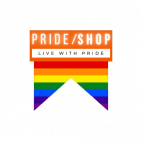Why It’s Important to Talk About Lesbian Identities
The word “lesbian” is often used broadly to describe any woman who is romantically or sexually attracted to other women. However, this generalization can blur the diverse expressions, unique experiences, and relationship styles that exist within the lesbian community.
Understanding different lesbian identities not only deepens our appreciation for this diversity but also helps challenge harmful stereotypes and fosters more inclusive environments. In this guide, we’ll explore some of the most well-known lesbian identities—their meanings, origins, characteristics, and how they’ve evolved over time.
1. Butch Lesbian: Reclaiming Masculinity
The butch lesbian is one of the most iconic figures in queer culture. Butches often express themselves through traditionally masculine clothing, confident body language, and sometimes a dominant role in relationships.

Historically, butches were at the forefront of lesbian visibility—often bravely living openly in times of greater social resistance. Today, being butch is both a deeply personal style and a political act that defies societal expectations around femininity and gender roles.
2. Femme Lesbian: Feminine and Proud
Femme lesbians embrace traditionally feminine aesthetics like makeup, dresses, heels, and long hair. Unfortunately, their identity is sometimes questioned—even within LGBTQIA+ spaces—because it contrasts with the public’s stereotypical view of what a lesbian “looks like.”

However, being femme is just as valid. Femme lesbians challenge the notion that queerness must reject femininity, proving that attraction to women and a feminine presentation can coexist powerfully.
3. Androgynous Lesbian: Blending the Binary

Androgynous lesbians—or “andros”—combine masculine and feminine elements in how they dress and present themselves. This identity speaks to those who reject rigid gender roles and embrace a fluid approach to style and self-expression.
Androgyny creates space for equality and flexibility in relationships, moving beyond traditional dynamics toward more balanced, authentic connections. It’s a living example of how gender can be expansive rather than limiting.
4. Soft Butch & Chapstick Lesbian: The Comfortable Middle

Occupying the space between butch and femme are soft butches and chapstick lesbians. These lesbians typically favor casual, gender-neutral styles like jeans, sneakers, tied-back hair, and little or no makeup.
The phrase “chapstick lesbian” reflects a preference for a low-maintenance, subtle approach to beauty. This laid-back identity resonates with many modern lesbians who want to express their queerness without dressing at either extreme of the spectrum.
5. Stone Butch: Intimacy with Boundaries
Stone butch is a more specific identity referring to someone who usually prefers not to be touched sexually or emotionally during intimacy. This could be due to body dysphoria, past trauma, or simply personal comfort and agency.
Rather than rejecting closeness, stone butches often prioritize their partner’s pleasure while carefully setting boundaries for themselves. Their identity centers themes like consent, comfort, and body autonomy—essential components of healthy and respectful intimacy.
6. High Femme: Glamorous and In Control
The high femme takes femininity to a heightened, almost theatrical level—with dramatic makeup, high heels, dazzling outfits, and strong presence. Often, high femmes take on dominant roles within relationships, flipping traditional gender assumptions on their head.
This identity defies the belief that feminine women are passive. In queer spaces, high femmes celebrate power through glamour—proving that lipstick and confidence can absolutely go hand in hand.
7. Studs, Stems & Cultural Variations
In Black, Afro-Caribbean, and other communities of color, terms like stud and stem carry cultural significance beyond aesthetic preference:
- Stud: A masculine-presenting lesbian, similar to a butch, but with distinct cultural meanings and community norms.
- Stem: A blend of “stud” and “femme”—someone who embraces both masculine and feminine traits.
- Femme: A familiar term, but expressed uniquely within specific cultural contexts.
These terms underscore how race, culture, and community deeply influence how lesbian identities are expressed and lived.
8. Roles in Relationships: Top, Bottom, Switch
Relationship dynamics are another way lesbians may express identity. These labels often relate to preference rather than fixed roles:
- Top: Typically more giving or dominant during intimacy.
- Bottom: Usually more receptive or passive in the moment.
- Switch: Comfortable either leading or receiving, adapting to partner and mood.
These terms are flexible and mostly used to aid communication in relationships—especially when discussing boundaries, desires, and compatibility.
9. Generational & Playful Labels: Baby Dyke, Hasbian, Gold Star
Some terms within the lesbian lexicon are rooted in internet culture and generational shifts. They might be lighthearted or carry deeper commentary:
- Baby dyke: Refers to someone newly exploring or coming into their lesbian identity.
- Gold star lesbian: A lesbian who has never had a relationship or sexual experience with a man. Often controversial for being exclusionary.
- Hasbian: Someone who previously identified as lesbian but now dates men—either jokingly or to reflect fluid identity.
These terms aren’t universal, and while playful for some, they can be sensitive for others. Understanding their nuances requires context and respect.
10. Emerging & Fluid Lesbian Identities
Lesbian identity is not static—it continues to shift and expand, particularly as understandings of gender and sexuality evolve. Some of the newer, more inclusive terms include:
- Non-binary lesbians: Individuals who don’t identify strictly as women but feel aligned with lesbian identity.
- Queer lesbians: Those who view their lesbianism as both a personal identity and a political stance against heteronormativity.
- Genderfluid lesbians: People whose gender identity shifts over time but whose primary attraction remains toward women.
As we move toward a more inclusive future, these emerging identities help break down rigid definitions and uplift diverse voices in the lesbian community.
Celebrating the Spectrum of Lesbian Identity
Lesbian identities are beautifully complex and ever-changing. These terms are not meant to limit who you are—but to help you find a sense of belonging, understanding, and empowerment.
Whether you identify as butch, femme, switch, stem, or something entirely your own, your identity adds to the vibrant and evolving story of what it means to be a lesbian today.
👉 For more insights, check out our guide on debunking LGBTQIA+ myths.

